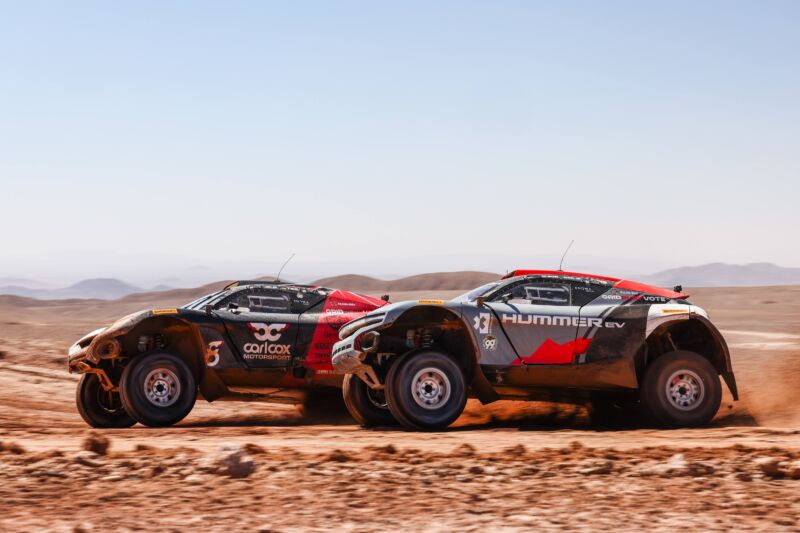Here’s how an off-road racing series will make its own hydrogen fuel

Enlarge / Extreme E travels to remote locations by boat and brings its own energy infrastructure with it. Currently, it makes its own hydrogen on site and uses that to charge EV batteries, but in 2025, the cars will switch to hydrogen fuel cells. (credit: Colin McMaster / LAT Images)
Extreme E provided flights from New York City to Antofagasta, Chile, and accommodations so we could attend the series' season 3 finale. Ars does not accept paid editorial content.ANTOFAGASTA, Chile - On a picnic bench in Chile's Atacama Desert, one of the most remote locations on Earth, Alejandro Agag is holding court.
"Welcome to the edge of the world," he laughs, gesturing toward the vast desert around him. A gust of wind kicks a cloud of sand and dust across the table. "It's amazing, this place."
The 53-year-old Spanish entrepreneur is taking in the sights and sounds of the season 3 finale of Extreme E, the off-road electric racing series he launched in 2021. Part of the series' ethos is that it races exclusively in regions of the globe that are heavily impacted by climate change (such as the Atacama Desert-the driest, non-polar region on Earth), typically with no spectators present.